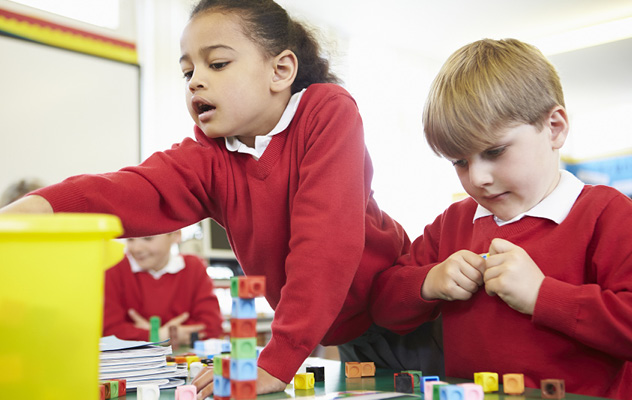
The government announced in July that is providing £41m of funding over the next four years to help schools adopt a ‘mastery’ approach to maths teaching. This means that more than 8,000 primary schools in England will be able to join the specialist training programme run through Maths Hubs. So what is mastery? and what might it mean for your school?
What is Mastery?
Mastery is based on the idea of children not moving on until they are secure in their understanding of a particular concept. The whole class is taught the same thing, at the same time, with children learning at an appropriate level through support and enrichment. Challenge is offered through higher order questioning and activities that develop deeper understanding, problem solving and reasoning skills.
The term mastery has now been around for a while with many different organisations promoting mastery approaches, which include pedagogies from east and south-east Asia. As a teacher it can be confusing, hearing about ‘Mastery’ and yet have had little or no support on how to incorporate this approach into your teaching.
The good news is that, though there are small differences depending on which organisation you talk to, the main ideas are the same. You may already be using many of the approaches in class without realising it!
How can all children learn the same thing?
Some may worry that teaching all children the same will be problematic and detrimental to learning; that some children will be overwhelmed, whereas others will be held back. Long have we had groups based on ability to manage learning effectively in the classroom. Children labelled as more able may be given more work, which they may rush to finish and are perceived as the best at maths. The children working at a different stage may give up and feel that they are bad at maths. This can lead to them seeing themselves as less able, a feeling which often will stay with them throughout their lives.
But is it always the quickest that are the best? In her book Mathematical Mindsets, Maths Education Specialist, Jo Boaler says that she values thoughtfulness over speed. That, given time to develop at their own speed, all children can feel as if they are successful mathematicians.
Differentiation using the mastery approach is offered through questioning children at an appropriate level and by exploring the concept more deeply. Children are only moved on when they are conceptually secure. Even though the topic is the same children access it at their own level. The Idea of concrete examples, pictorial examples and abstract is key. Only when secure at the concrete stage should children be moved on to using pictorial examples. Depth of learning is achieved through reasoning and seeing different approaches to work out answers. Rather than accelerating children onto the ‘next thing’, they spend time applying their skills and knowledge in less familiar contexts.
A variety of manipulatives can be used to explain why and how answers have been worked out. Manipulatives and other images are used throughout the school as a way of ensuring deep understanding, not only for support. When misconceptions arise, teachers use same day intervention with children to help them develop some understanding. Even though the same concept is being taught children will still be at different stages in their learning and will be supported to access the mathematics.
Tips from the experts
At the recent Primary mathematics conference a Maths Hubs lead teacher, who has been using the mastery approach with younger learners in school for the past year, passed on the following advice:
- Start with a concrete example- don’t draw apples, real apples should be counted first before moving onto pictures of apples. This way children know what they are counting and then understand fully what the pictures represent.
- When adding count the same things- add red apples and green apples not apples and pears you are adding different things.
- When moving from concrete (real apples/flowers/pencils) draw them as the children saw them. If the flowers were pink than draw pink flowers.
- Have lots of sets of equipment available for children across the whole school, not just in the younger year groups.
- Use concrete, pictorial and abstract appropriately to a child’s development e.g. don’t go straight in with a number line as it is abstract, start off with real life objects first.
Like any approach, some will like it and some will not, if you would like to find out more then take a look at this list which provides articles, resources and support around Mastery in Mathematics.
